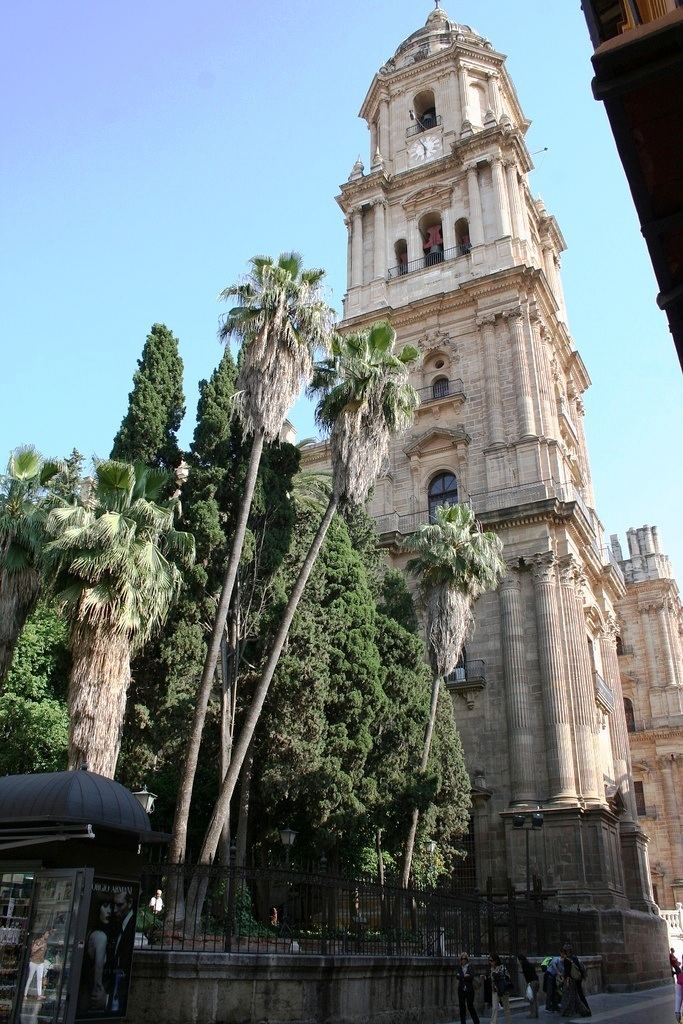Denomination Roman Catholic Height 84 metres (276 ft) Phone +34 952 22 03 45 Groundbreaking 1528 | Completed 1782 Opened 1782 Architect Diego Siloe | |
 | ||
Address Calle Molina Lario, 9, 29015 Málaga, Spain Similar Alcazaba of Málaga, Castillo Gibralfaro, Museo Picasso Málaga, Automobile Museum and Fashi, Carmen Thyssen Museum | ||
M laga cathedral m laga spain 2016
The Cathedral of Málaga is a Roman Catholic church in the city of Málaga in Andalusia in southern Spain. It is in the Renaissance architectural tradition. The cathedral is located within the limits defined by a now missing portion of the medieval Moorish walls, the remains of which surround the nearby Alcazaba and the Castle of Gibralfaro. It was constructed between 1528 and 1782, following the plans drawn by Diego de Siloe; its interior is also in Renaissance style.
Contents
Description
The cathedral, built on a rectangular plan, is composed of a nave and two aisles, the former being wider, though having the same height as the aisles. The choir stalls are the work of Pedro de Mena.
The façade, unlike the rest of the building, is in Baroque style and is divided into two levels; on the lower level are three arches, inside of which are portals separated by marble columns. Above the doors are medallions carved in stone; those of the lateral doors represent the patron saints of Málaga, Saint Cyriacus and Saint Paula, while that over the centre represents the Annunciation.
The north tower is 84 metres (276 ft) high, making this building the second-highest cathedral in Andalusia, after the Giralda of Seville. The south tower remains unfinished. A plaque at the base of the tower states that funds raised by the parish to finish it were used instead to help those British colonies which became the United States to gain their independence from Great Britain. Examinations of the parish registers indicate, however, that the money may have been used instead to renovate the roadway called the "Way of Antequera" (which began in the present street Calle Martinez Maldonado). This unfinished state has led to the cathedral being called "La Manquita", meaning in English, "The One-Armed Lady".
A series of grand artworks fills the sanctuary, among them are the Gothic altarpiece of the Chapel of Santa Barbara and the 16th century tombs of the Chapel of San Francisco. The Chapel of the Incarnation contains a neoclassic altarpiece (1785) designed by the sculptor Juan de Villanueva and carved by Antonio Ramos and Aldehuela, a group of figures representing the Annunciation and sculptures of the patron saints of Malaga, Saint Ciriaco and Saint Paula, carved by Juan Salazar Palomino also in the 18th century, and The Beheading of Saint Paul, painted by Enrique Simonet in 1887 during his stay in Rome.
